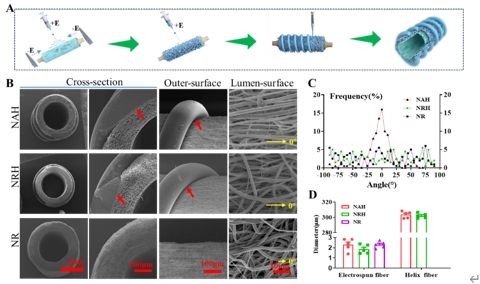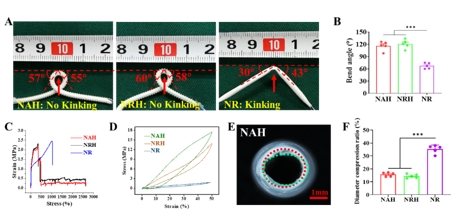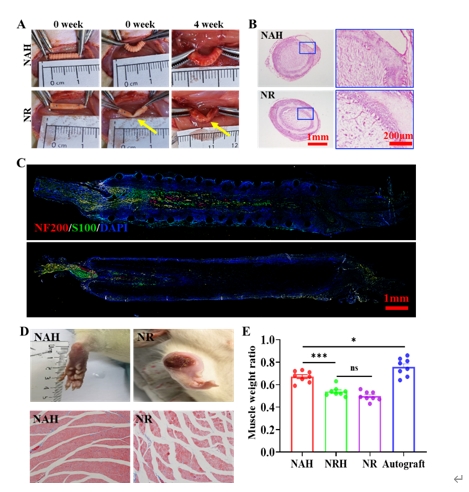中国神经再生研究(英文版) ›› 2025, Vol. 20 ›› Issue (7): 2084-2094.doi: 10.4103/NRR.NRR-D-23-01792
新型柔性神经导管具有优异机械性能且可促进神经再生
A novel flexible nerve guidance conduit promotes nerve regeneration while providing excellent mechanical properties
Tong Li1, 2, 3, #, Quhan Cheng4, #, Jingai Zhang4 , Boxin Liu4 , Yu Shi4 , Haoxue Wang4 , Lijie Huang4 , Su Zhang4 , Ruixin Zhang4 , Song Wang5 , Guangxu Lu6 , Peifu Tang1, *, Zhongyang Liu1, *, Kai Wang4, *
- 1 Department of Orthopedics, the Fourth Medical Center of Chinese PLA General Hospital, Beijing, China; 2 Department of Training and Sports Medicine, Characteristic Medical Center of Chinese People’s Armed Police Force, Tianjin, China; 3 Medical School of Chinese PLA, Beijing, China; 4 Key Laboratory of Bioactive Materials for the Ministry of Education, College of Life Sciences, Nankai University, Tianjin, China; 5 Department of Orthopedics, Tianjin Hospital, Tianjin, China; 6 Department of Rehabilitation Medicine, Er Quan Hospital of PAP, Wuxi, Jiangsu Province, China
摘要:
在临床实践中,无张力神经吻合通常只能满足较短神经缺损(< 5 mm)的修复。在长短神经缺损的情况下,自体移植仍然是金标准,但其可引发多种并发症。因此能桥接周围神经损伤的神经导管被认为是一种克服自体移植局限性的替代品。一种理想的神经导管应具有优异的机械性能,包括灵活性、抗扭结和管腔塌陷能力,同时也能为神经再生提供物理引导。实验使用静电纺丝技术在神经导管最内腔面制备了取向纤维,随后在取向纤维外制备无序的静电纺丝纤维,最后在静电纺丝管的外壁使用熔融纺丝技术制备螺旋状的熔融纺丝纤维。这种柔性神经导管内腔面的取向纤维可促进神经细胞沿着纤维伸展,而外部的螺旋熔融纤维可增强抗扭结和抗挤压特性,并具有良好的结构稳定性。最后,将这种新型柔性神经导管植入大鼠坐骨神经缺损模型,可见其可有效促进了神经再生和神经功能恢复。结果表明,这种新型柔性神经导管是一种有临床应用前景的用于周围神经缺损修复的神经导管。
https://orcid.org/0000-0003-4279-1704 (Peifu Tang); https://orcid.org/0000-0003-4943-1955 (Zhongyang Liu); https://orcid.org/0000-0003-3317-3509 (Kai Wang)


